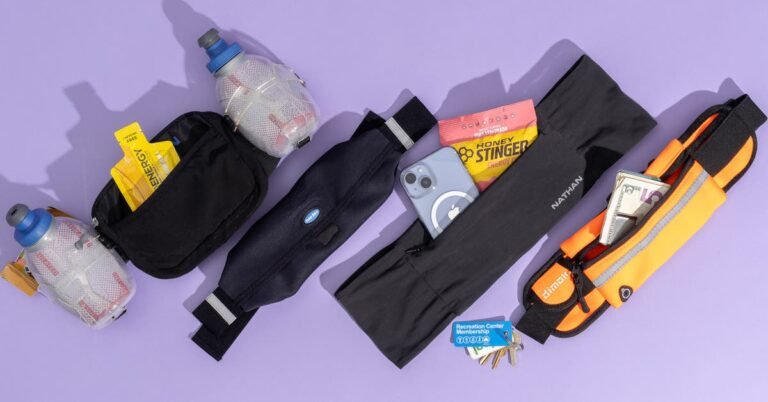Don’t expect prices to spike immediately. Many companies have been preparing for tariffs by steadily increasing prices over the past few months and have existing stock to sell through.
But experts say that many companies will almost certainly have to raise prices eventually, even if their products are not produced abroad.
Because of global supply patterns, almost every product will use parts or materials from one of the countries subject to high tariffs, even if the product is made elsewhere. Nearly anything you buy is likely to be affected by tariffs in some way.
About a third of consumer electronics are made in China. And close to 75% of America’s clothing imports come from Asia. More than half of all US furniture imports come from China and Vietnam.
Apple still makes most of its iPhones in China, which is now tariffed at 104%. Analysts have said that if Apple were to pass on tariffs to its customers, the iPhone 16 could increase from $800 to more than $1,100 (and that estimate was when the tariff rate was 54%, not 104%).
But it’s unlikely that buyers will bear the full brunt of that higher tax. Apple is reportedly looking to shift some iPhone production to India to soften the impact of tariffs while it seeks an exemption from the Trump administration (as it did in Trump’s first term).
Still, the uncertainty has spurred anxious shoppers to panic-buy iPhones in the days leading up to the day the tariffs took effect.
For the record: We do not recommend panic-buying anything.
When it comes to clothing and footwear, much of which is imported from Southeast Asia, you can expect to see higher prices on newly launched seasonal apparel rather than dramatic increases on current items.
Shoppers are also likely to see the cost of basics like underwear and T-shirts go up, because demand for those items is consistent, Sheng Lu, a professor of apparel studies at the University of Delaware, told me. And shoe prices will likely increase, because most shoe factories are located in countries that have been hit by the highest tariffs, such as China and Vietnam.
Even businesses that make their products in the US will be affected by tariffs. US–based furniture company Sabai, maker of one of Wirecutter’s top sofa picks, said in an email to customers on April 6 that while the company is “fortunate to be somewhat insulated from the impact of tariffs, as least compared to most furniture companies,” it still expects its costs to increase 5% to 10% by the summer due to tariffs, which it will “likely” have to pass on to buyers.
“It is essentially impossible to source all the materials necessary to create our products domestically, while being able to offer them to you at anywhere near the price we currently do,” Sabai said in its email. “The US manufacturing industry doesn’t have the ability and infrastructure to make some of our components, requiring us to source from overseas. For context, some of these components cost between 3-5 times more to produce in the US, if they are available at all.”
Meanwhile, some companies may stop selling specific products in the US altogether. Laptop maker Framework said earlier this week that it would pause US sales of certain configurations of the Framework Laptop 13, our repairable Windows laptop pick, due to the 10% baseline tariff that went into effect April 5. Framework said that the tariff increase on imports from Taiwan meant the company would lose money on sales of its base-model laptop.
And while Nintendo hasn’t raised the $450 price of its just-announced Switch 2, which goes on sale June 5, preorders for the much-anticipated gaming console have been delayed due to tariff uncertainty. Preorders were originally slated to begin April 9, but Nintendo said it would update the timing “at a later date” to “assess the potential impact of tariffs and evolving market conditions.”
Source link
[og_img
Don’t expect prices to spike immediately. Many companies have been preparing for tariffs by steadily increasing prices over the past few months and have existing stock to sell through.
But experts say that many companies will almost certainly have to raise prices eventually, even if their products are not produced abroad.
Because of global supply patterns, almost every product will use parts or materials from one of the countries subject to high tariffs, even if the product is made elsewhere. Nearly anything you buy is likely to be affected by tariffs in some way.
About a third of consumer electronics are made in China. And close to 75% of America’s clothing imports come from Asia. More than half of all US furniture imports come from China and Vietnam.
Apple still makes most of its iPhones in China, which is now tariffed at 104%. Analysts have said that if Apple were to pass on tariffs to its customers, the iPhone 16 could increase from $800 to more than $1,100 (and that estimate was when the tariff rate was 54%, not 104%).
But it’s unlikely that buyers will bear the full brunt of that higher tax. Apple is reportedly looking to shift some iPhone production to India to soften the impact of tariffs while it seeks an exemption from the Trump administration (as it did in Trump’s first term).
Still, the uncertainty has spurred anxious shoppers to panic-buy iPhones in the days leading up to the day the tariffs took effect.
For the record: We do not recommend panic-buying anything.
When it comes to clothing and footwear, much of which is imported from Southeast Asia, you can expect to see higher prices on newly launched seasonal apparel rather than dramatic increases on current items.
Shoppers are also likely to see the cost of basics like underwear and T-shirts go up, because demand for those items is consistent, Sheng Lu, a professor of apparel studies at the University of Delaware, told me. And shoe prices will likely increase, because most shoe factories are located in countries that have been hit by the highest tariffs, such as China and Vietnam.
Even businesses that make their products in the US will be affected by tariffs. US–based furniture company Sabai, maker of one of Wirecutter’s top sofa picks, said in an email to customers on April 6 that while the company is “fortunate to be somewhat insulated from the impact of tariffs, as least compared to most furniture companies,” it still expects its costs to increase 5% to 10% by the summer due to tariffs, which it will “likely” have to pass on to buyers.
“It is essentially impossible to source all the materials necessary to create our products domestically, while being able to offer them to you at anywhere near the price we currently do,” Sabai said in its email. “The US manufacturing industry doesn’t have the ability and infrastructure to make some of our components, requiring us to source from overseas. For context, some of these components cost between 3-5 times more to produce in the US, if they are available at all.”
Meanwhile, some companies may stop selling specific products in the US altogether. Laptop maker Framework said earlier this week that it would pause US sales of certain configurations of the Framework Laptop 13, our repairable Windows laptop pick, due to the 10% baseline tariff that went into effect April 5. Framework said that the tariff increase on imports from Taiwan meant the company would lose money on sales of its base-model laptop.
And while Nintendo hasn’t raised the $450 price of its just-announced Switch 2, which goes on sale June 5, preorders for the much-anticipated gaming console have been delayed due to tariff uncertainty. Preorders were originally slated to begin April 9, but Nintendo said it would update the timing “at a later date” to “assess the potential impact of tariffs and evolving market conditions.”
Wirecutter’s Expert Advice on How to Navigate the New Tariffs
[title_words_as_hashtags



